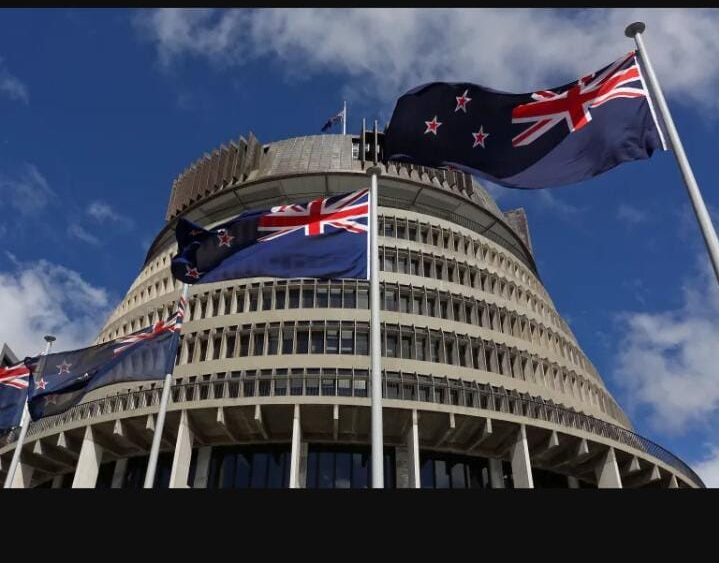
The North Atlantic Treaty Organization (NATO) is a political and military alliance established in 1949, aimed at ensuring the collective defense of its member states. The organization’s membership has expanded over the years, reflecting shifting global alliances and security needs. This article will explore NATO’s purpose, membership structure, and its historical evolution, providing a comprehensive understanding of the alliance and its significance in global geopolitics.
NATONATO was created in the aftermath of World War II to provide collective security against the Soviet Union and its allies during the Cold War. Its founding treaty, the North Atlantic Treaty (also known as the Washington Treaty), binds its members to mutual defense in response to an armed attack against any member. The organization also aims to promote democratic values and encourage cooperation on defense and security-related issues.
Founding Members of NATONATO originally had 12 founding members when it was established in 1949.
These members included:
Belgium
Canada
Denmark
France
Iceland
Italy
Luxembourg
Netherlands
Norway
Portugal
United Kingdom
United States
These countries formed the core of NATO and played a key role in shaping its policies and structure.
NATO’s Expansion Over Time
Since its founding, NATO has grown significantly in membership, primarily as a result of the end of the Cold War and the dissolution of the Warsaw Pact. The expansion process allows new members to join based on their commitment to NATO’s principles of democracy, individual liberty, and the rule of law. New members are also required to demonstrate military capability and make contributions to NATO’s collective security.a. Post-Cold War EnlargementThe end of the Cold War opened the door for several former Eastern Bloc countries to join NATO, marking a significant shift in the geopolitical landscape. Key rounds of expansion occurred in:1999: Czech Republic, Hungary, and Poland became members.2004: The largest expansion to date, adding Bulgaria, Estonia, Latvia, Lithuania, Romania, Slovakia, and Slovenia.
2009: Albania and Croatia joined the alliance.
2017: Montenegro became a member.
2020: North Macedonia became the 30th member of NATO.
Current NATO Members
As of 2024, NATO has 31 member countries, spanning Europe and North America. These countries include both major military powers and smaller nations committed to collective defense.
Here is a complete list of NATO members:
Albania
Denmark
France
Iceland
Italy
Luxembourg
Netherlands
Norway
Portugal
United Kingdom
United States
These countries formed the core of NATO and played a key role in shaping its policies and structure.
NATO’s Expansion Over Time
Since its founding, NATO has grown significantly in membership, primarily as a result of the end of the Cold War and the dissolution of the Warsaw Pact. The expansion process allows new members to join based on their commitment to NATO’s principles of democracy, individual liberty, and the rule of law. New members are also required to demonstrate military capability and make contributions to NATO’s collective security.a. Post-Cold War EnlargementThe end of the Cold War opened the door for several former Eastern Bloc countries to join NATO, marking a significant shift in the geopolitical landscape. Key rounds of expansion occurred in:1999: Czech Republic, Hungary, and Poland became members.2004: The largest expansion to date, adding Bulgaria, Estonia, Latvia, Lithuania, Romania, Slovakia, and Slovenia.
2009: Albania and Croatia joined the alliance.
2017: Montenegro became a member.
2020: North Macedonia became the 30th member of NATO.
Current NATO Members
As of 2024, NATO has 31 member countries, spanning Europe and North America. These countries include both major military powers and smaller nations committed to collective defense.
Here is a complete list of NATO members:
Albania
Belgium
Bulgaria
Canada
Croatia
CzechRepublic
Belgium
Bulgaria
Canada
Croatia
CzechRepublic
Denmark
Estonia
France
Germany
Greece
Hungary
Iceland
Italy
Latvia
Lithuania
Luxembourg
Montenegro
Netherlands
NorthMacedonia
Norway
PolandPortugal
Romania
Slovakia
Slovenia
Spain
Turkey
United Kingdom
United Statesa.
Pending Membership and Aspirants
Several countries have expressed interest in joining NATO or have been considered for future membership. Countries such as Georgia, Ukraine, and Bosnia and Herzegovina have sought closer ties to NATO and aspire to join, but their applications face various political and security challenges.
The Importance of Collective Defense
A core element of NATO’s strategy is of the North Atlantic Treaty, which states that an attack on one member is considered an attack on all. This principle has only been invoked once, following the September 11, 2001, terrorist attacks on the United States. remains a cornerstone of NATO’s defense policy, providing reassurance to smaller member states while deterring potential aggressors.
Military Contributions and Capabilities
NATO members contribute to the alliance in various ways, including military personnel, equipment, and financial resources. The United States, as the largest and most powerful member, provides a significant portion of NATO’s military capability, particularly in terms of air power, naval forces, and nuclear deterrence.
Other key contributors include: The United Kingdom: Provides substantial air and naval forces.
France: A leading military power in Europe with strong nuclear deterrence capabilities.
Germany: Europe’s largest economy and a crucial contributor to NATO’s land forces. Smaller nations also contribute in proportion to their capabilities, often specializing in areas such as cyber defense, intelligence, or logistics.
NATO’s Role in Global Security
Beyond its collective defense role, NATO has become increasingly involved in global security issues, including peacekeeping missions, crisis management, and disaster relief. Notable operations include NATO’s intervention in the Balkans during the 1990s, its mission in Afghanistan from 2001 to 2021, and various training and support missions in Iraq, Libya, and Kosovo.
NATO and Cybersecurity
With the rise of cyber threats, NATO has expanded its focus to include cybersecurity and defense against digital attacks. NATO members cooperate to enhance their cybersecurity capabilities, share intelligence, and defend against state-sponsored cyber-attacks and other emerging threats.
Counterterrorism Efforts
NATO plays a key role in counterterrorism, working with partner countries and international organizations to combat terrorism, share intelligence, and disrupt terrorist networks. NATO’s global partnerships allow for coordinated efforts to prevent and respond to terrorist attacks, both domestically and abroad.
NATO’s Challenges and Future Direction
NATO faces several challenges as it navigates an increasingly complex and multipolar global landscape. Some of the most pressing issues include:Rising tensions with Russia, especially in the wake of the annexation of Crimea and ongoing conflict in Ukraine.Managing relations with China, particularly as it becomes a global superpower with expanding influence.Internal divisions among member states over defense spending, foreign policy priorities, and the balance between diplomacy and military action.Despite these challenges, NATO continues to adapt and evolve, maintaining its relevance in the 21st century by focusing on emerging threats such as cyber warfare, space security, and climate change.
NATO remains one of the most important military alliances in the world, playing a crucial role in maintaining peace and security in the Euro-Atlantic region and beyond. Its members, both large and small, contribute to collective defense and work together to address modern security challenges. As NATO continues to evolve, it will remain a key pillar of global security for decades to come.
Subscribe to Follow Global Trends for daily global news.
Find Out How To Make Money As A Full Time Writer/Blogger Guide.
To Advertise, Advertise Your Affiliate Links on FollowGlobalTrends.com for Just $1 Per Link Per Month!
Related Articles
Israel’s War on Gaza Live: Israeli Attacks Kill 68 in 24 Hours
Israel’s War on Gaza: Live Updates on Israelis in Cairo as US Says Truce in Sight
Israel’s War on Gaza Live: Truce Still Elusive as Israeli Attacks Kill 52
Brief: Israel War on Gaza Live: No Letup in Israeli Attacks Ahead of Truce Talks
Written by: Enyoghasi Ngozi pricillia

